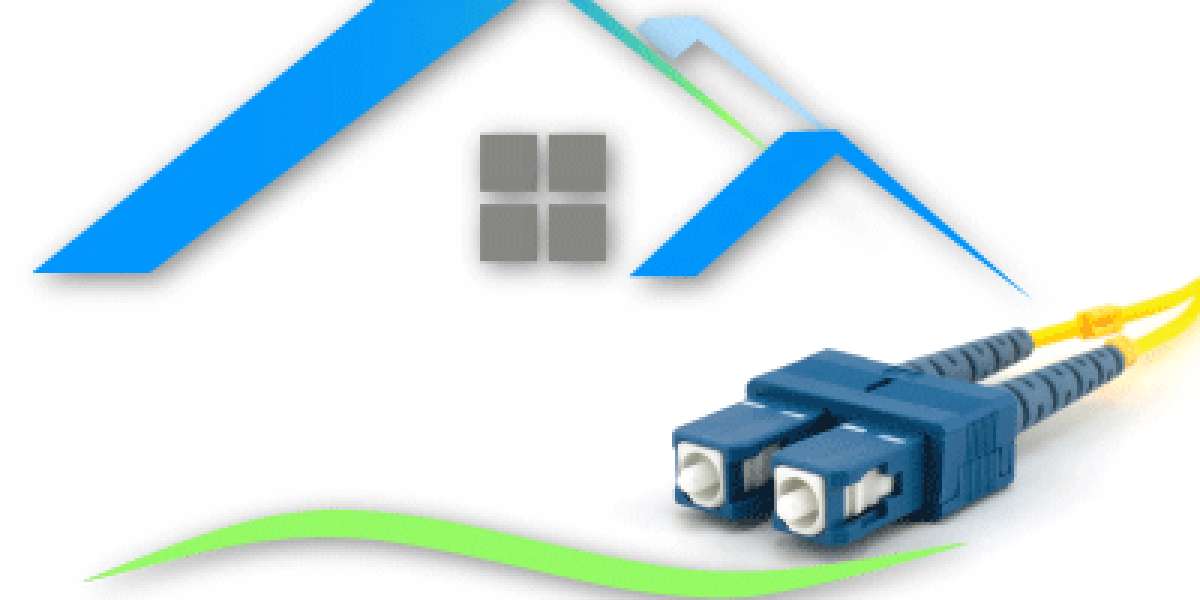In an era defined by digital connectivity and high-speed internet access, the concept of "Fiber to the Home" (FTTH) is rapidly emerging as the gold standard for home networking. With its unparalleled speed, reliability, and scalability, fiber optic technology is revolutionizing the way we connect to the internet and access digital services within our homes. In this guest post, we'll delve into the transformative potential of FTTH and explore why it is poised to become the future of home networking.
Understanding Fiber to the Home (FTTH): Fiber to the Home refers to the deployment of fiber optic cables directly to individual residences, enabling high-speed internet access and other digital services. Unlike traditional copper-based broadband technologies like DSL or cable, which rely on electrical signals, fiber optics transmit data using light signals through thin strands of glass or plastic fibers. This optical transmission method allows for significantly higher bandwidth, faster speeds, and greater reliability compared to traditional broadband technologies.
Unparalleled Speed and Bandwidth: One of the primary advantages of FTTH is its unparalleled speed and bandwidth capabilities. Fiber optic cables can support gigabit-speed internet connections, allowing users to download and upload data at speeds of up to 1 gigabit per second (Gbps) or even faster. This ultra-fast connectivity enables seamless streaming of high-definition video content, lag-free online gaming, rapid file downloads, and smooth video conferencing, among other bandwidth-intensive applications.
Reliability and Stability: Fiber optic technology offers unmatched reliability and stability compared to traditional broadband technologies. Unlike copper cables, which are susceptible to electromagnetic interference and signal degradation over long distances, fiber optic cables are immune to such issues. As a result, FTTH connections deliver consistent performance and low latency, ensuring a reliable internet experience even during peak usage periods or adverse weather conditions.
Future-Proof Infrastructure: In an age of ever-increasing digital demands and data consumption, fiber optic technology represents a future-proof infrastructure investment. With its virtually unlimited bandwidth capacity, fiber optic networks can easily accommodate future technological advancements and the growing proliferation of bandwidth-intensive applications, such as virtual reality (VR), augmented reality (AR), 8K streaming, and the Internet of Things (IoT). By deploying FTTH, homeowners can future-proof their network infrastructure and ensure that their connectivity needs are met for years to come.
Symmetrical Upload and Download Speeds: Unlike many traditional broadband technologies that offer asymmetrical upload and download speeds, fiber optic connections typically provide symmetrical speeds, meaning that the upload and download speeds are the same. This symmetrical bandwidth allocation is particularly advantageous for activities such as video conferencing, cloud computing, remote work, and online collaboration, where fast upload speeds are essential for transmitting large files or streaming high-quality video content in real-time.
Enhanced User Experience: Fiber optic technology enhances the overall user experience by reducing latency, eliminating buffering, and delivering consistently high-speed connectivity. Whether streaming movies, playing online games, or video chatting with friends and family, FTTH enables a seamless and immersive digital experience with minimal interruptions or slowdowns. This improved user experience contributes to higher satisfaction levels among homeowners and enhances the value proposition of FTTH.
Economic and Social Benefits: The widespread deployment of FTTH infrastructure brings about numerous economic and social benefits at both the individual and societal levels. From enabling remote work and telecommuting to supporting e-learning and telemedicine initiatives, fiber optic connectivity fosters economic growth, enhances educational opportunities, and improves access to healthcare services. Additionally, FTTH infrastructure deployment creates jobs, stimulates innovation, and promotes digital inclusion, thereby bridging the digital divide and fostering social equity.
Environmental Sustainability: Fiber optic technology is inherently more environmentally sustainable than traditional broadband technologies. Fiber optic cables consume less energy and have a longer lifespan than copper cables, reducing the environmental impact associated with network infrastructure deployment and operation. Furthermore, the energy-efficient nature of FTTH networks contributes to lower carbon emissions and helps mitigate the environmental footprint of the telecommunications industry.
In conclusion, Fiber to the Home (FTTH) represents the future of home networking, offering unmatched speed, reliability, scalability, click now https://crsc.ca/fiber-to-the-home/ and future-proof infrastructure for homeowners. With its ability to deliver ultra-fast, symmetrical internet connections, FTTH enhances the user experience, supports digital innovation, and fosters economic and social development. As the demand for high-speed internet access continues to grow, FTTH stands poised to revolutionize the way we connect, communicate, and interact within our homes and communities.




